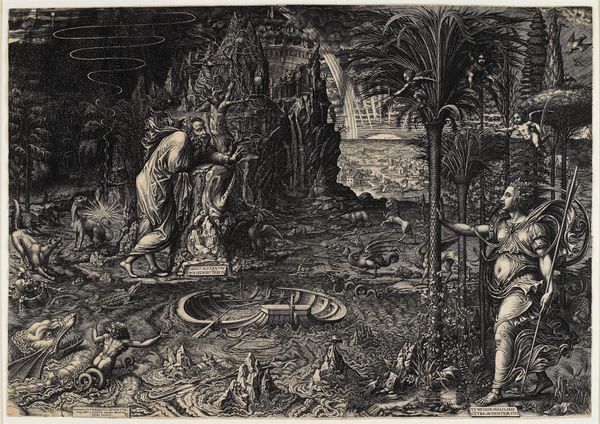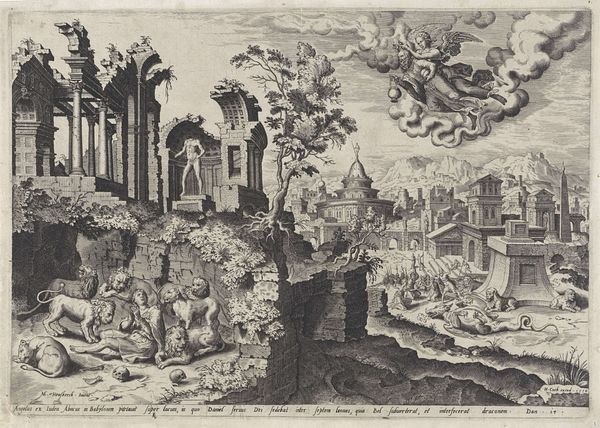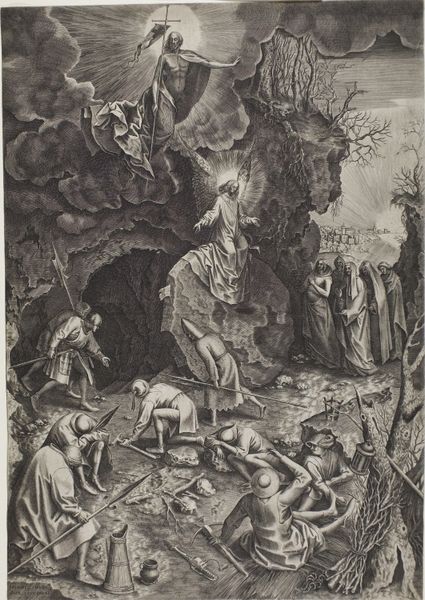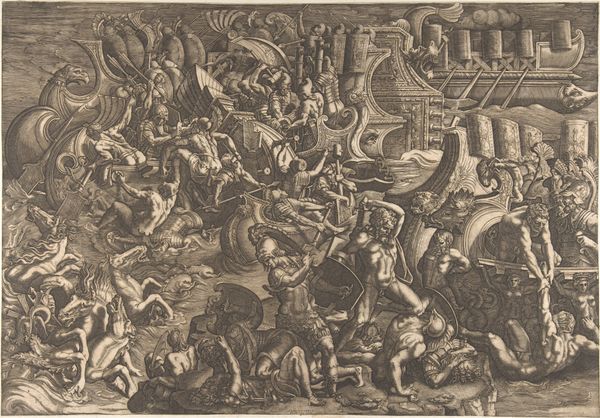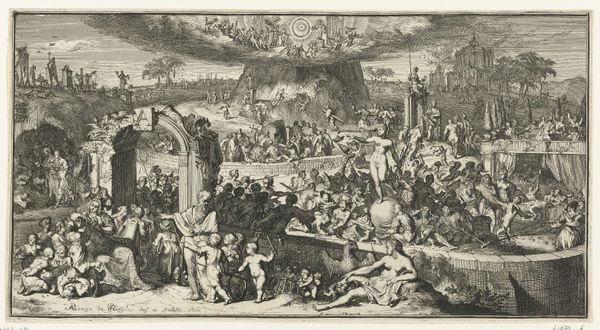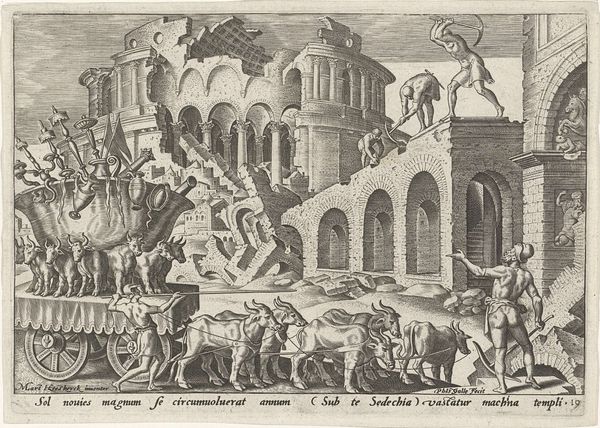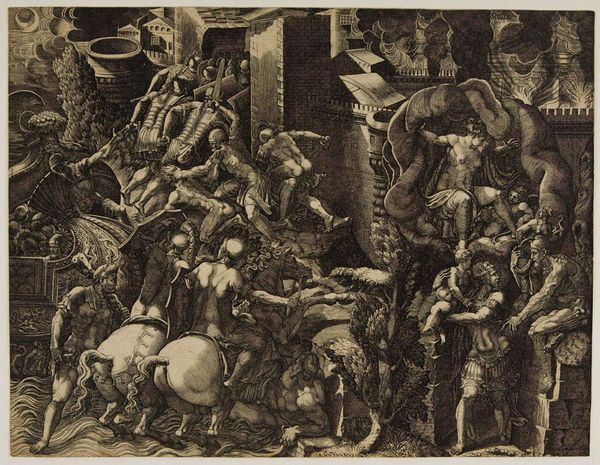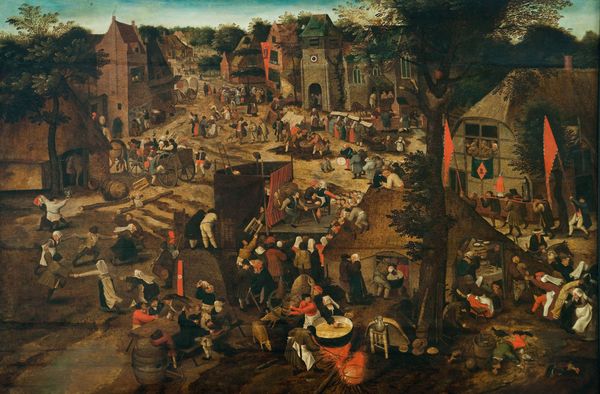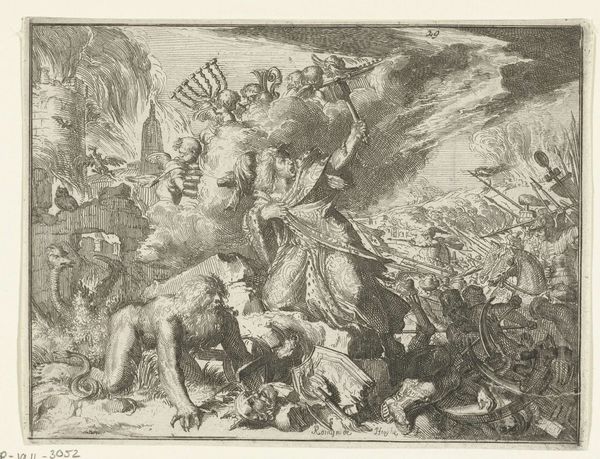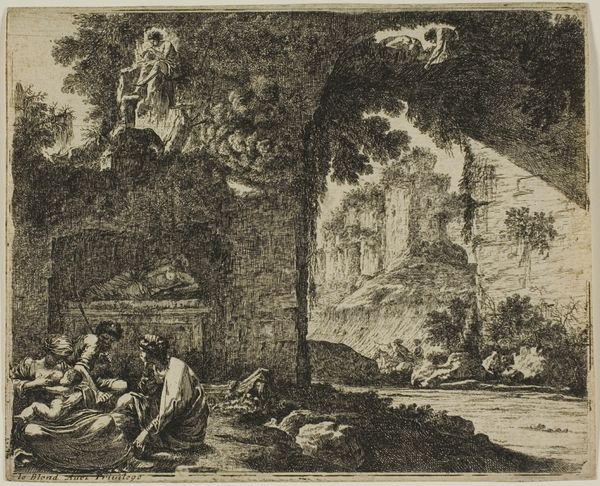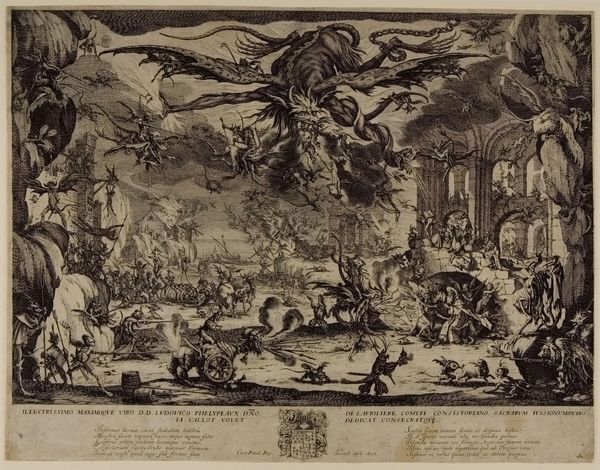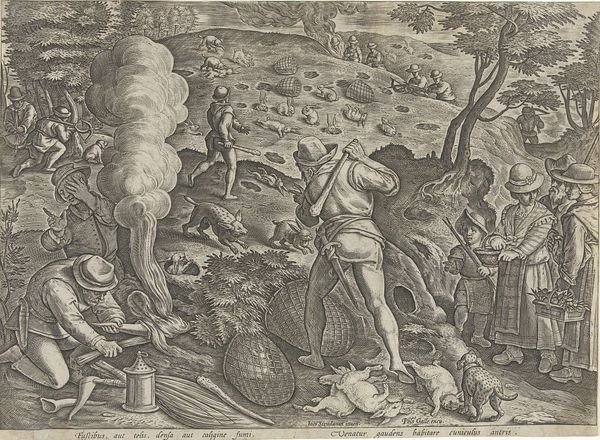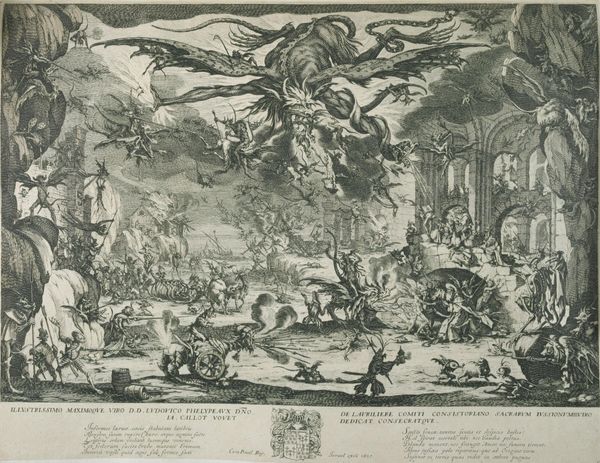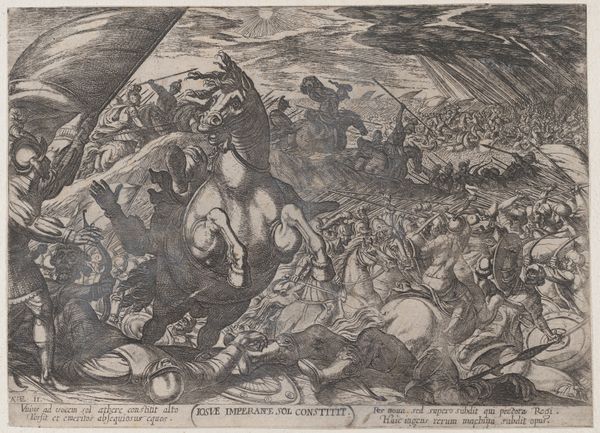
painting, oil-paint
#
allegory
#
painting
#
oil-paint
#
landscape
#
mannerism
#
oil painting
#
history-painting
Dimensions: height 28 cm, width 88 cm, depth 5.3 cm
Copyright: Rijks Museum: Open Domain
Curator: Well, that’s quite a scene! Before us, we have Jacob Isaacsz. van Swanenburg’s oil painting, "The Last Judgment and the Seven Deadly Sins," painted sometime between 1600 and 1638. It’s like stepping into a nightmare, isn't it? Editor: Utter chaos! I’m immediately struck by this sense of swirling dread. It's a vision of hellscape, quite literally. A visual overload of fleeing figures and fiery destruction. My initial impression is overwhelmingly… apocalyptic. Curator: Apocalyptic indeed! Swanenburg was quite keen on dramatic, theatrical narratives. This piece clearly aims to depict the moral and spiritual consequences of sin. Remember, this was a period steeped in religious fervor and a fascination with moralizing tales. Look at how the landscape itself seems to mirror the inner turmoil of the figures. Editor: The composition is rather unusual, wouldn't you say? Almost split in two. On one side, it feels like a more classical inferno with ruins ablaze, while the other has this gathering under…is that a massive serpent or some primeval beast? It's quite the contrast in representation of the same horrific theme. Curator: Exactly. The beast symbolizes the lurking danger of temptation, a constant threat even in what might appear to be mundane surroundings. The gathering huddling beneath are enacting their mortal sins, completely oblivious to the disaster around the corner. You can almost hear their wicked whispers! It reveals how moral failing permeates the lives of the everyday people. Editor: I see, so it is about social commentary in addition to religious morality. What about those nude figures scattered around? Are they symbolic of loss of innocence, perhaps? The vulnerable exposure that comes with being judged? Curator: It can certainly be interpreted that way. The nudity, particularly in a religious context, is a display of vulnerability and ultimate lack of control when facing judgment. In terms of style, the artist blends traditional landscape with Mannerist elements – see the exaggerated figures, and swirling smoky forms! He masterfully combines all these various things, capturing the period's anxious vision of morality and humanity. Editor: So, less a portrait of judgment, and more an invitation to examine one’s own ethical landscape? Quite a heavy contemplation to take away from a single viewing! Curator: Indeed. Swanenburg provides a fascinatingly turbulent window into a time when morality and destiny were intensely debated. What’s fascinating to me is thinking how artists negotiate power, perception and piety in turbulent epochs. Editor: It truly has me thinking... Perhaps our contemporary anxieties aren't that different, really.
Comments
No comments
Be the first to comment and join the conversation on the ultimate creative platform.
